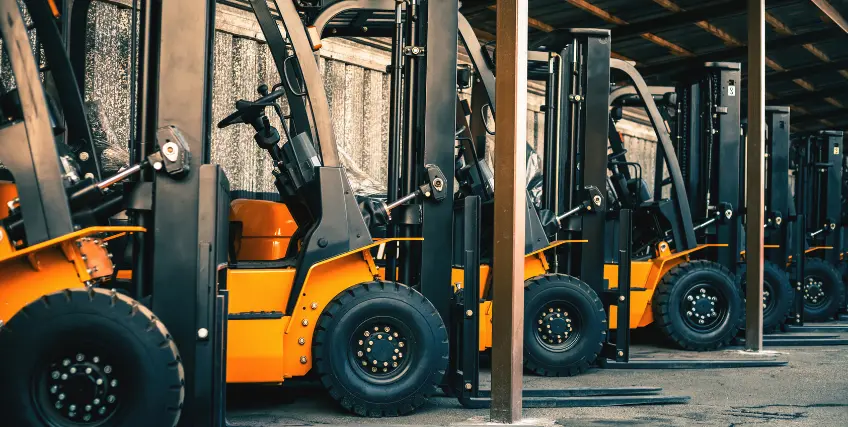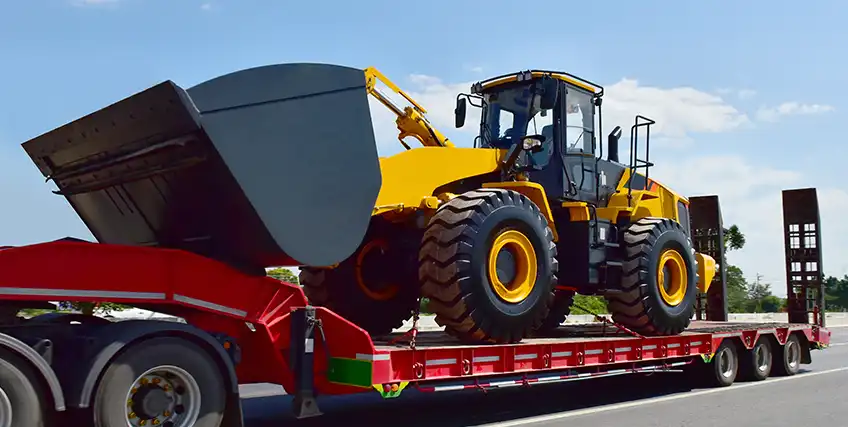What is the Best Business Equipment Loan for Small Businesses?
December 30, 2024 | Last Updated on: December 30, 2024

Small businesses are at the heart of America’s economy. There are more than 33 million small businesses in the United States. Many of these businesses rely on equipment to run their companies and provide the products and services that make their business unique. But most aren’t paying for their equipment with cash upfront. Instead, they’re using business equipment loans to purchase the tools and resources they need, while extending payment over the life of the equipment.
In this article, we’ll look at the pros and cons of a few different types of financing you can use to fund your business equipment. We’ll also show you what you need to get approved for an equipment loan.
Types of commercial and equipment funding for small businesses
There are several types of business equipment loans you should consider when looking for financing. Finding the right loan for your company will be based on how much money you’re seeking, your business’ credit history, financing timeline, and desired repayment terms.
Equipment financing for small business owners is available from several types of lenders. Traditional lenders like banks and credit unions tend to offer reasonable rates, but funding can be slow to arrive. Online lenders are more lenient in who they approve, and offer faster funding and more flexible payment options, but rates may be higher. That depends on your needs and the situation in which you need the new equipment.
Let’s look at some common types of business equipment financing.
Term Loans
Term loans provide the full entire loan amount upfront and are paid back in equal monthly payments.
Term loans can serve as business equipment loans with some lenders. They can also be used for things other than equipment, including working capital, inventory, payroll, and other operating expenses.
Pros of a term loan:
- Has a predetermined payment schedule – With a term loan, you can budget better with predictable payments.
- Often has an early repayment option – Most term loans don’t have a penalty for prepayment, which allows you to save money on interest.
- Has lower interest rates – Annual percentage rates vary from loan to loan, but term loans generally have lower interest rates than other financing options.
Cons of term loans:
- Stricter approval requirements – Eligibility for term loans vary, but some require substantial annual revenue, a significant downpayment, and a good credit score.
Equipment Loans
The best equipment loans are tailored to help meet specific business needs, such as machinery, commercial vehicles, computer equipment, HVAC units, medical equipment, restaurant equipment, construction equipment, and more.
And because with a business equipment loan, the equipment serves as collateral, you can typically get better rates than unsecured loans.
With equipment financing for businesses, the loan term is determined by the useful life of the equipment, which typically ranges from one to ten years.
Pros of equipment financing:
- Offers fast funding – Equipment loans can be approved and funded in as little as two to three business days, particularly with an online small business loan marketplace.
- Has predictable payments – The repayment terms for equipment financing are preset with predetermined fees, interest rates, and repayment schedules.
- Improves business credit score – Paying off an equipment loan may help you build better business credit.
Cons of equipment financing:
- Loan may outlive equipment – There’s always the chance that the equipment financed doesn’t last the entirety of its useful life, for example, if your equipment gets damaged or wears out due to heavy use. This could leave you making payments on obsolete or non-working equipment.
SBA Loans
SBA loans are a great option for many startups and small business owners looking to finance equipment. The U.S. Small Business Administration (SBA) works with registered SBA lenders to guarantee a portion of the loan amount. The SBA backing makes these loans more obtainable for small businesses that aren’t eligible for traditional financing.
SBA loans can be used for several purposes, with up to $5 million available for borrowing. While it’s usually easier to get approved for an SBA loan than a bank loan, it can take a few months before receiving your loan funds.
SBA loan proceeds can also be used for working capital, commercial real estate, franchise financing, inventory costs, renovations, debt refinancing, and more.
Repayment for SBA loans consists of regular monthly payments that include a fixed or variable interest rate.
Pros of SBA Loans:
- Has low down payments – The down payment requirement for SBA loans can be as low as 10%. Some banks require up to 30%, so SBA loans are a more attractive option.
- Offers longer repayment terms – SBA loans will offer the highest repayment period possible for equipment loans and other small business financing.
- Has low-interest rates – Since the SBA partially backs SBA loans, they’re lower risk to lenders and usually have lower interest rates than other equipment loan providers.
Cons of SBA Loans:
- Has a lengthy application process – The application process for an SBA loan is not as fast as other loans, and funding can take weeks or months.
- Exhaustive in terms of paperwork – In addition to standard loan documents with the lender, the SBA also requires a personal financial statement, borrower information form, and a request for tax transcripts.
- Strict Credit Requirements – SBA loan programs require a strong business credit history which can limit access for startups and small businesses without established financial credentials.
Business Line of Credit
While these are not actually loans, some small business owners use a line of credit to purchase their equipment. It works similarly to business credit cards but with more attractive terms.
With a business line of credit, borrowers are approved for a set amount of money they can draw on whenever they need funds. Monthly payments are made to pay the loan back and interest is charged only on the amount of funds currently withdrawn.
Business lines of credit work well for established businesses or new business owners. Applicants may approved in as little as 48 hours.
Pros of a line of credit:
- Offers fast cash – Once a line of credit is established, you have fast access to available funds to buy your equipment.
- Builds credit history – Making regular payments on a business line of credit can help you establish a positive credit history and improve your business credit score.
- Requires you to pay only on withdrawn funds – Having a line of credit provides instant access to funds, and borrowers only pay interest on the credit line they’ve used.
Cons of a line of credit:
- Sometimes requires frequent documentation – Some credit lines require updated documents with each draw or annually.
- Sometimes has high fees – Business lines of credit have higher interest rates and loan fees than other business financing options, especially for clients with bad credit.
Choosing a business equipment loan provider
Business equipment loans are available through traditional lenders and alternative lending marketplaces.
Traditional lenders include banks and credit unions. The application process through traditional lenders can be exhaustive. It requires you to make an appointment in person, complete extensive documentation, and prove your creditworthiness.
In the end, approval rates with traditional lenders are often lower than they are with online lenders. It also takes weeks to months to go through the entire process, whereas online loan brokers can sometimes get your equipment loan funding to you within a couple of days.
With an online lender, you can apply online from home. They work with several financial institutions to get the best loan for you. Business owners who’ve previously had problems getting small business funding often succeed with an online broker.
How to get approved for a business equipment loan
There are a few things you can do to streamline the equipment loan process. We’ll walk you through it.
Decide how much business equipment financing you need
The first step is determining how much money you need to borrow for your business equipment. Shop around and get quotes, then tally a final total for the cost of your equipment. Consider how easy it will be for you to make payments on your equipment loan once you’re approved.
Do your due diligence
Before applying for a loan, it’s wise to check your credit score and gather some standard financial documents. Each lender will have different requirements regarding credit scores and required documentation.
Some commonly requested documents include:
- Bank statements
- Tax returns
- Credit report
- Income statements
- Business plan
- Identification documents
Explore lenders and small business loan marketplaces
Once you have documentation in hand, know where your credit stands, and have identified which equipment your business needs and how much you need to get it, it’s time to research lenders.
You should also figure out how fast you need your business equipment. Remember, a bank or the SBA will usually slow down how fast you receive your funds. If you have time, though, a local commercial bank is a good place to start.
If not, research online or alternative lenders. Learn their requirements, the fees they may charge, the types of loans they offer, and other information to help you choose the best equipment lender for your business needs.
Apply for your loan
Once you have everything you need, apply for your business equipment loan. Ensure that you complete the application as instructed and submit all required documentation. Failure to do so can halt the progress of your equipment funding.
FAQs
What are the typical terms for equipment financing?
Business equipment loans usually offer anywhere from one year to 10 years to pay off the loan, depending on how long the equipment itself is expected to last. The loan repayment term and the interest rate charged will depend on your credit score, downpayment, and other loan criteria.
Do all business equipment loans require a downpayment?
No, they don’t. With the right lender, credit score, time in business, and the type of equipment being purchased, some borrowers get their equipment financed at 100%.
Is it easy to get an equipment loan for my business?
Getting approved for equipment funding for small businesses is easier than other commercial loans because the equipment becomes collateral. A lender usually views an equipment loan as less risky than other types of financing.
How high does my credit score have to be for a business equipment loan?
To get a better interest rate on business equipment loans, your credit should be 675 or higher. However, many variables impact repayment terms and interest rates. Some small business owners with a credit score of as little as 575 can get equipment financing through an online lending marketplace.
What is the best equipment financing?
The best equipment financing is one that best meets your needs and offers a repayment plan you can adhere to.
Frequent searches leading to this page
top business loans, equipment lenders, best equipment financing, equipment loan rates today




